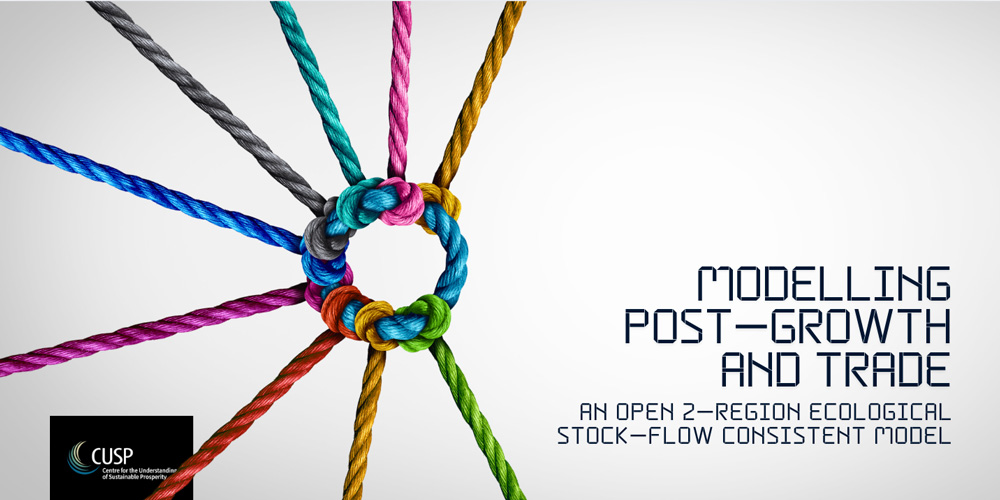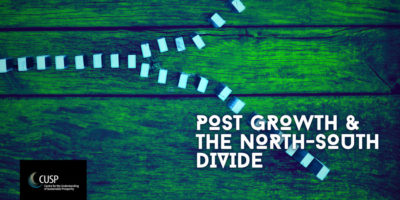Modelling Post-Growth and Trade: an open 2-region ecological stock-flow consistent model
Dario Leoni, Andrew Jackson and Tim Jackson
CUSP Working Paper Series | No 41

Summary
This working paper presents a full description of a 2-region post-Keynesian stock-flow consistent (SFC) model. The Post-growth And Development Macroeconomic (PADME) model is a conceptual representation of two linked economies that are each made up of seven sectors. The two regions are linked together through international trade and financial flows. The theoretical framework underpinning the model is that of ecological economics. Specifically, the economies of both regions are dependent on the consumption of natural resources.
In addition to the open nature of the PADME economies, the model contains several original features. The most relevant are cost-induced endogenous technological change, an investment function partially dependent on profits, a novel approach to determining household consumption, and a clear separation between technological development and input substitution. Thanks to these features, PADME is able to simulate the impacts on both economies of a cap-and-trade scheme on domestic resource consumption and resources embedded in imports in one region. This is an important novelty as it expands the role that prices and supply-side polices play in SFC models. After introducing the model, we conclude the working paper by describing other international macroeconomic policies that can be simulated in PADME and that, to the best of our knowledge, have not been simulated in the SFC literature yet. Specifically, we show how to model a financial transfer and a technology transfer from one region to the other.
The full working paper is available for download in pdf (3.1MB).
Citation
Leoni D, Jackson A and T Jackson 2024. Modelling Post-Growth and Trade: an open 2-region ecological stock-flow consistent model. CUSP Working Paper No. 41. Guildford: Centre for the Understanding of Sustainable Prosperity.






